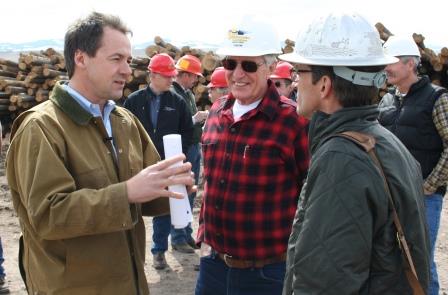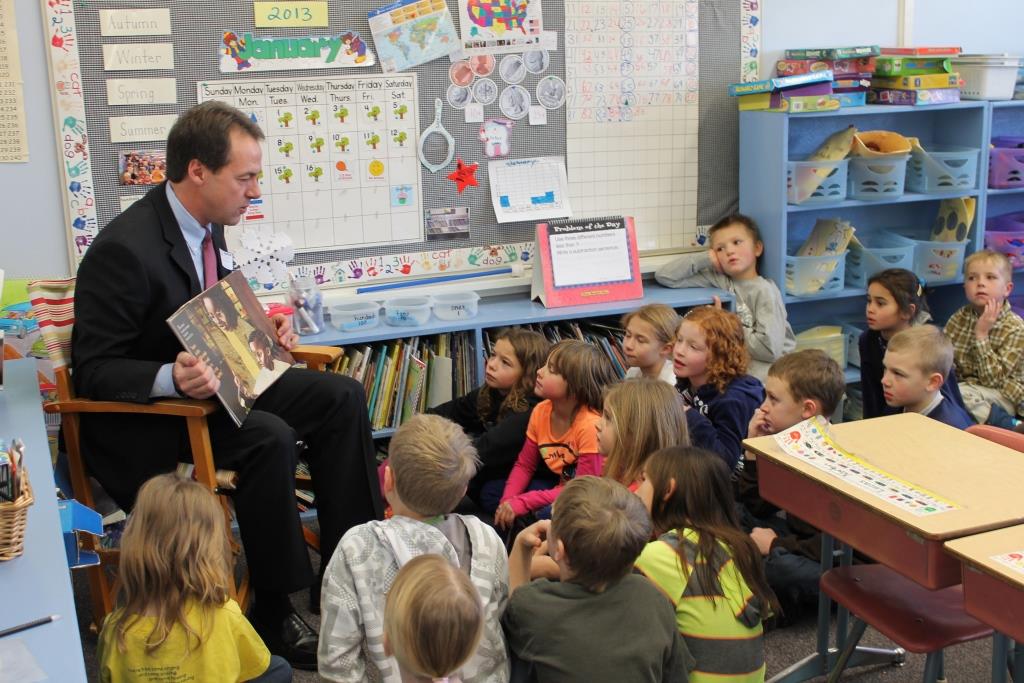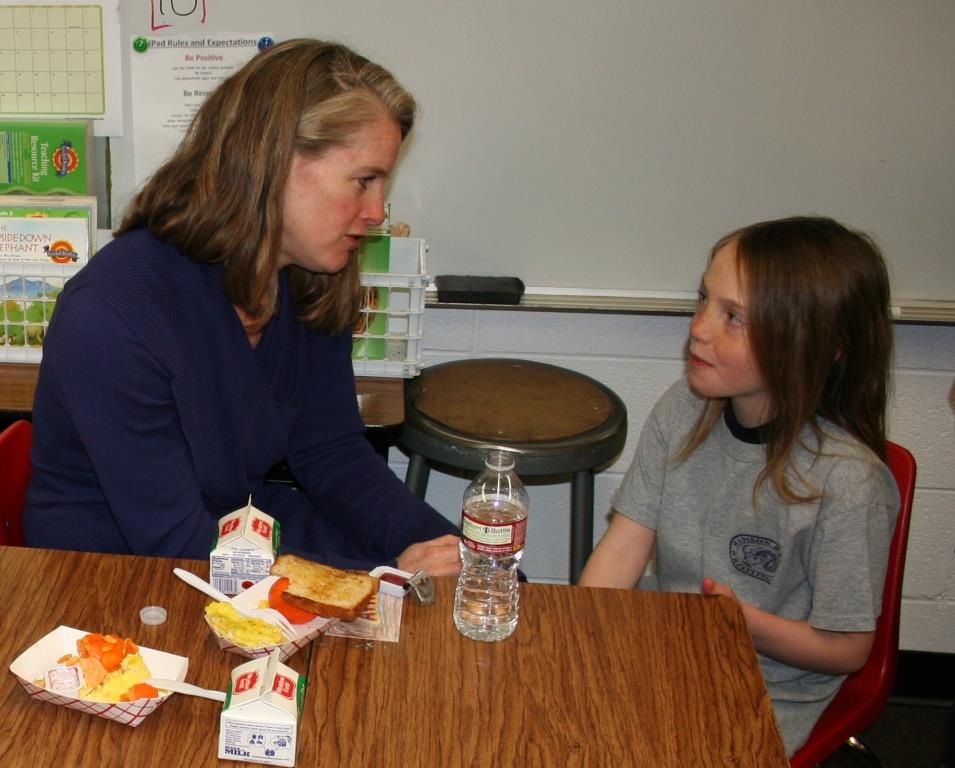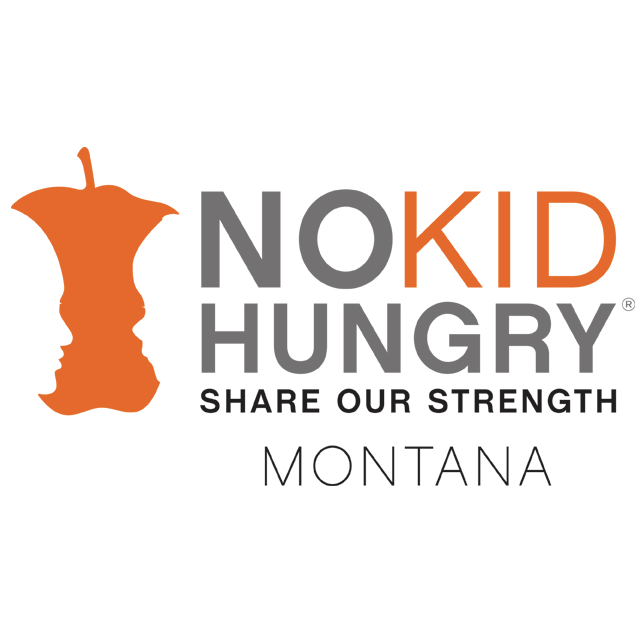Other
Better Jobs
 Accomplishments
Accomplishments
- Cut taxes for every Montana business
- Eliminated the business equipment tax for 2/3rds of Montana businesses
- Created the first ever business plan for the state: the Main Street Montana Project
- Launched the Equal Pay for Equal Work Task Force to ensure all Montanans earn a fair day's wage for a fair day's work
- Provided tax cuts for businesses that install new pollution control equipment
- Ensured that Montana state government was recognizing tribally organized businesses, to improve economic opportunity for Indian Country.
Initiatives
Main Street Montana Project
Governor Steve Bullock launched the Main Street Montana Project in early 2013 to develop a business plan for Montana by Montanans. This plan will build on Montana's strengths, while addressing challenges that have slowed business and wage growth in the state. The Project, which is led by several of Montana's top private-sector business leaders, met with thousands of Montanans, from every corner of the state to develop this plan.
In April of 2014, Governor Bullock, along with private sector leaders, released the plan, which focuses on 5 key pillars:
- Train and Educate Tomorrow's Workforce Today
- Create a Climate that Attracts, Retains and Grows Business
- Build Upon Montana's Economic Foundation
- Market Montana
- Nurture Emerging Industries and Encourage Innovation
Learn more about the Main Street Montana Project at: MainStreetMontanaProject.com
Aligning Workforce Development Strategies to Meet the Demands of a Changing Economy
It's no secret that Montana's economy, like the global economy, is changing. It's with this in mind that Governor Bullock is working to ensure that Montanans have access to training that will equip them with the skills to compete in an ever changing economy, while also ensuring Montana businesses have access to talented and trained workers.
In 2013, Montana earned a $25 million grant to bring together colleges and more than 80 private sector businesses, to design curricula and course work that will ensure Montana students are gaining the skills that today's economy demands. Through this partnership, students will get hands-on training with tools, in settings that will allow them to succeed in today's workforce. In addition, having a talented and trained workforce will help entice new and innovative businesses to set up shop in the state.
Learn more about the Business Portal at: Business.mt.gov
Equal Pay for Equal Work Task Force
Governor Bullock believes that all Montana workers deserve a fair day's wage for a fair day's work, regardless of their gender. Unfortunately, this isn't the case in Montana. Currently, women are earning only 67 percent of what men earn, putting Montana at 39th place in the nation for pay equity.
It's with this in mind that in June of 2013, Governor Bullock established the Equal Pay for Equal Work Task Force to identify the causes of the gender pay gap, and develop solutions to close it once and for all.
Learn more about the Equal Pay for Equal Work Task Force at: EqualPay.mt.gov
Better Education
 Accomplishments
Accomplishments
- Made historic investments in public education
- Froze tuition at Montana colleges and universities
- Expanded dual enrollment opportunities, and improved access to career training programs for Montana high school students
- Improved access to school breakfast programs in Montana public schools, ensuring that 40,000 more students start every day ready to learn with a healthy breakfast
- Secured funding to expand access to high-quality early childhood education in 16 Montana communities
- Created the Governor's STEM Scholarship to provide financial assistance to students pursing an education in science, technology, enginering or math
Initiatives
Early Edge
Governor Steve Bullock understands that if we want to have a workforce that can compete for the jobs of tomorrow, we must invest in the children of today. This is why he launched his Early Edge campaign to bring high-quality, universally available, early childhood education to Montana 4-year olds.
The benefits of high-quality early childhood programs are clear:
- For every dollar we invest in these programs we save $7-$9 in reduced costs in remediation, public services, and incarceration
- Children who aren't ready for kindergarten are 50 percent less likely to read proficiently by 3rd grade
- 90 percent of a child's brain development occurs before the age of 5
Despite this, Montana is one of only 8 states with no publicly-funded pre-kindergarten option.
Learn more about Governor Bullock's Early Edge campaign at: www.EarlyEdgeMT.com
Complete College Montana
Governor Bullock recognizes that having a talented and trained workforce is the key to a strong economy, which is why he laid out the ambitious goal of increasing the number of Montanans with a complete college degree or career certificate from 40 to 60 percent over the next decade. By increasing the number of Montanans with degrees it will help businesses expand with confidence, knowing that they have a workforce that can fill the jobs that are most in demand.
Through this effort, Montana is:
- Implementing performance funding in Montana University System schools
- Improving developmental education for students who enter postsecondary institutions underprepared
- Increasing dual enrollment opportunities for high school students to earn college credit
- Creating guided pathways and academic maps to help students graduate on time
- Improving data collection to ensure Montana is achieving its goals
Breakfast After The Bell Montana
Governor Bullock, First Lady Bullock, and Montana No Kid Hungry Campaign to Fight Childhood Hunger in Montana
 What is ‘Breakfast after the Bell?’
What is ‘Breakfast after the Bell?’
Breakfast after the Bell is an initiative to fight childhood hunger in Montana led by Governor Bullock, First Lady Bullock, and Share our Strength’s No Kid Hungry Campaign.
The goal of ‘Breakfast after the Bell’ is to increase participation in school breakfast programs.
One in five children in Montana is hungry, and approximately three-quarters of teachers nationwide say that they have students who come to school hungry. We can’t expect our students to grow and learn when they’re worried about where they will get their next meal.
No child should be hungry in Montana. That’s why the Governor and First Lady Bullock are encouraging schools across the state to implement breakfast programs, or to switch to an alternative breakfast model that increases student participation. “Breakfast after the bell” refers to any evidence-based model that increases student participation in breakfast, such as breakfast in the classroom, grab n’ go breakfasts, or breakfast on the bus.
Why School Breakfast?
It’s simple. School breakfast programs reduce childhood hunger, and research shows that students who eat school breakfast have increased attentiveness, improved behavior, higher attendance, and less sick and tardy days. These kids also have fewer disciplinary referrals. In short, breakfast is important for ensuring the success of our students.
Right now, less than half of Montana kids who rely on free or reduced-priced lunches are also receiving breakfast. One of the reasons for this dismal breakfast participation rate is that traditional school breakfast models can be inconvenient to access and stigmatizing for children from low-income families.
Research shows that serving food after school starts (“after the bell”) can dramatically increase breakfast participation. As a result, more kids are fed and ready to learn. Teachers and principals who have implemented breakfast after the bell say they’ve seen improvement in student behavior, and students who eat breakfast attend more school, score higher on tests, and are more likely to graduate.
The 30 schools in Montana that have initiated breakfast after the bell programs have some of the highest participation rates in the state. Schools like Darby, Sidney, Fromberg Elementary, Corvallis High School, and many others are leaders in Montana.
 What are Breakfast after the Bell mini-grants?
What are Breakfast after the Bell mini-grants?
Often the only thing standing in the way of a school implementing a breakfast program—or switching to a breakfast model that increases student participation—is some money for startup costs.
That’s why Governor and First Lady Bullock are administering Breakfast after the Bell Mini-Grants to help schools with starting new breakfast programs or switching to an alternative model to increase participation rates.
Grants will be disbursed in the amount of up to $5,000 per school, providing schools flexible funding for necessary start-up equipment costs (i.e.: additional coolers, refrigerators, waste cans, cleaning supplies, food carts, etc.), food, training and personnel needs, and incentivizing the transition to a more inclusive breakfast model.
To apply, visit: grants.nokidhungry.org and enter access code "MTBREAKFAST2016"
 How can you help with Breakfast after the Bell?
How can you help with Breakfast after the Bell?
You can help feed thousands of Montana children by contributing to the Breakfast after the Bell grant fund. It costs only (up to) $5,000 per school to provide schools the resources they need to feed kids breakfast.
To find out more information about Breakfast After the Bell mini-grants and the other resources available to support school breakfast program expansion in Montana, visit: http://mt.nokidhungry.org/school-breakfast-program
More Effective Government
 Accomplishments
Accomplishments
- Made responsible fiscal management a top priority by insisting on a balanced budget, that leaves a responsible ending fund balance that ensures Montana is prepared for unexpected challenges
- Made critical investments into the full spectrum of mental health services across montana
- Put Montana's checkbook online, so residents can see how their tax dollars are being spent
- Cracked down on dark money groups that seek to influence Montana elections without disclosing where they're getting their money and how they're spending it
- Brough Montana taxpayer dollars back from the federal government to expand health access to our friends, neighbors, and family members, while throwing a lifeline to the state's rural hospitals
- Took steps to improve protection of Montana's most vulnerable residents, including children and seniors
- Fixed Montana's ailing public employee pension system without raising taxes or cutting services
- Reduced interest rates on local government infrastructure projects, saving taxpayers millions of dollars
- Brought forward a made in Montana plan to ensure the sage grouse remains under state management and prevents its listing under the Endangered Species Act
Initiatives
Energy Efficiency in State Government
Governor Bullock understands that promoting energy efficiency in the state not only saves taxpayers dollars, but also helps to protect the quality of life we all enjoy. Through innovations at the state's data center, Montanans have saved hundreds of thousands of dollars in energy costs.
Bullock also called on his cabinet agencies to begin publicly disclosing energy usages, so Montanans will know how the state is conserving energy. These energy usage statistics will help to guide energy efficiency measures in state government. View these energy statistics at: http://deq.mt.gov/Energy/conservation/benchmarking.mcpx
SMART Schools Challenge
Lt. Gov. McLean's SMART Schools Challenges are aimed at saving schools money and promoting health by encouraging energy efficiency, conservation, waste reducation, and green practices in schools across the state.
Schools in the U.S. spend more than $6 billion a year on energy costs, and cite their energy bill as being one of their largest expenses. By implementing a few simple changes, Montana schools will be able to save money, which can be used to educate our children.
Learn more about the SMART Schools Challenge at: deq.mt.gov/energy/eec/smartschools

